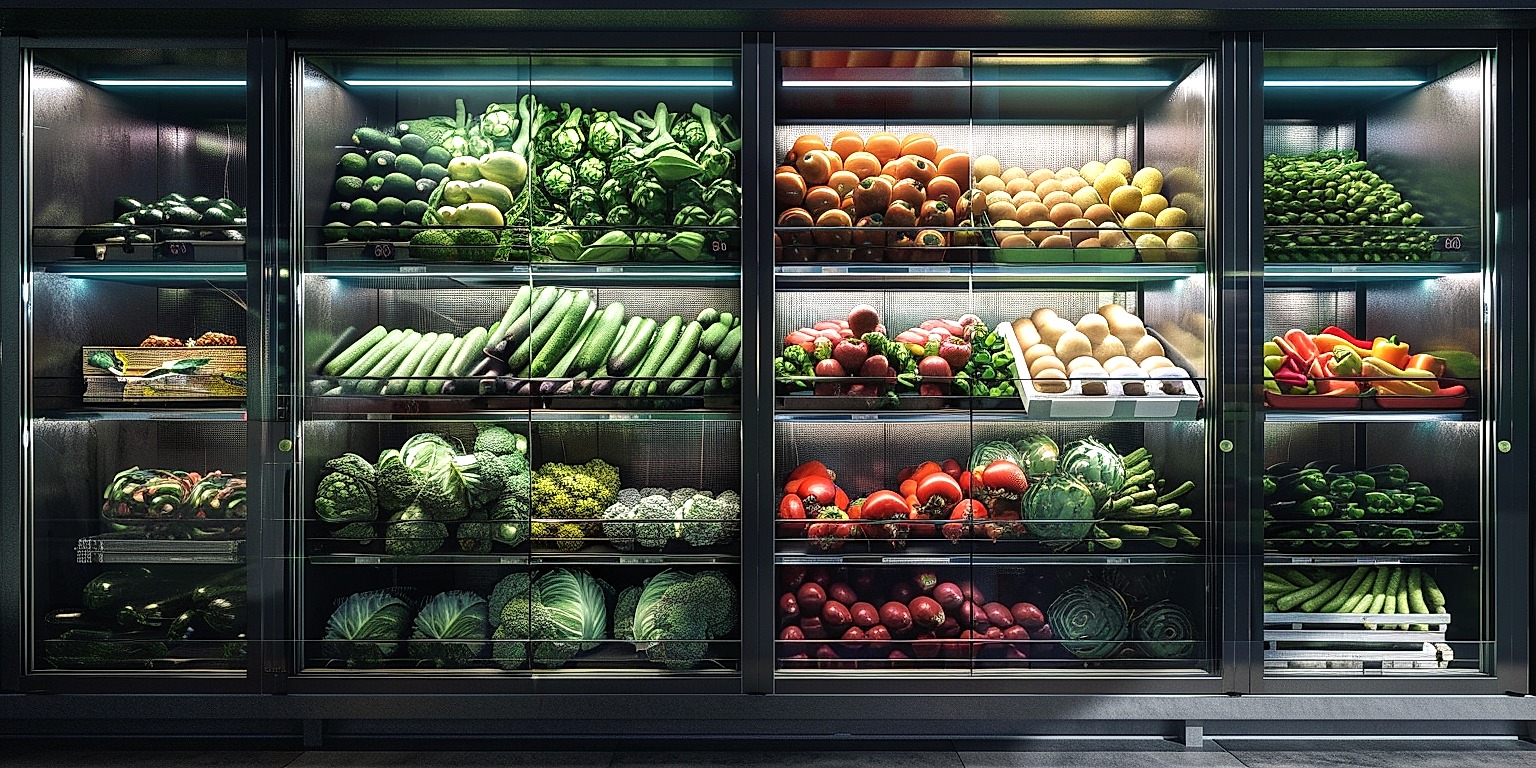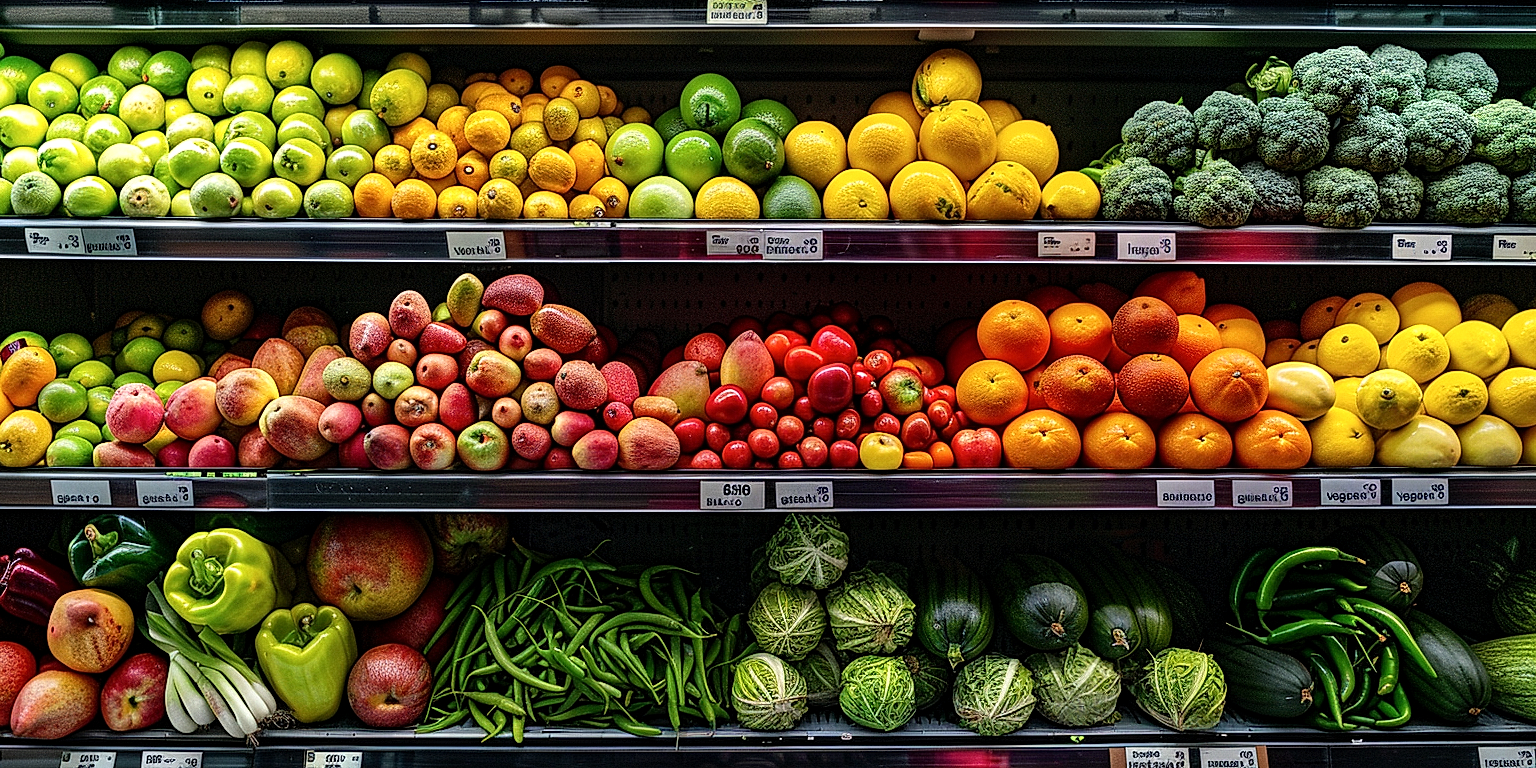Ensuring that seasonal produce stays fresh is a key challenge for retail businesses.
Profitability and customer satisfaction hinge greatly on the effective handling and storage of these perishable goods.
Such strategies, employing both modern technological advancements and traditional wisdom, can significantly reduce waste and increase profitability.
This is crucial given the perishability and time-sensitivity inherent to these products.
Practical implementation of these methods requires a comprehensive understanding of each step’s importance in the storage process.
The aim of this article is to provide you with effective strategies to optimize the shelf-life of your seasonal produce.
Strategies For Storing Seasonal Produce In Retail
1. Use Commercial Refrigeration Units for Temperature Control
The importance of regulation of temperature for storing seasonal produce in the retail environment cannot be overstated.
In these settings, commercial refrigeration units play a pivotal role.
From large walk-in coolers to individual display refrigerators, these units offer various options for effective temperature control.
The produce’s freshness, visual appeal, and nutritional value display a direct correlation with the temperature at which they are stored.
Among the wide range of seasonal produce, each type has a specific temperature range for optimal storage.
Berries, for example, maintain quality better at temperatures close to freezing, whereas delicate leafy greens may suffer damage under such cold conditions.
Commercial refrigeration units offer the necessary flexibility by allowing for different temperature settings in different compartments or units, catering to a variety of produce.
They are fitted with temperature control systems that maintain the specified temperature, offering an ideal storage environment for the produce.
Another attractive aspect of commercial refrigeration units is their capability of maintaining a constant temperature over the long term.
Rigorous daily activities in the retail industry can cause frequent opening and closing of the storage units, potentially leading to fluctuating temperatures.
Such fluctuations can negatively impact the quality of the stored produce.
However, commercial units are designed to negate this issue by maintaining a constant temperature throughout the day.
Fruit and vegetable quality and food safety are also intrinsically linked with storage temperature.
It has been observed that most bacterial growth slows down or halts altogether at temperatures below 40°F, thereby boosting the shelf life of the produce.
Seasonal produce is a significant factor for retail businesses, and optimal temperature control, provided by commercial refrigeration units, ensures that the produce is kept at its prime, leading to satisfied customers and increased sales.
Therefore, investing in commercial refrigeration units is a proven strategy for storing seasonal produce in retail, providing suitable climate control and contributing to the produce’s overall freshness and quality.
2. Install humidity-controlled storage for specific produce.
It is a reality that each type of seasonal produce requires a different storage condition for ultimate freshness.
This involves humidity control in their storage compartments.
Humidity-controlled storage for specific produce aims at creating a unique microclimate perfect for each produce type.
By adjusting the humidity levels, temperature, and ventilation settings, fruits and vegetables are kept in their most exceptional state, guaranteeing longer shelf life.
This is because proper humidity levels reduce the rate of water loss from the produce, slowing down the process of decay.
One key strategy implemented is the use of specialized humidity-controlled refrigeration units.
These units are essentially self-contained chambers designed to cater to distinct requirements of each produce.
Advanced models even possess the ability to adjust their settings automatically based on the type of produce stored within.
This valuable tool is indeed, a game-changer for retail businesses seeking to maximize the lifespan of their seasonal produce.
However, effective humidity control does not rely solely on the storage unit’s capabilities.
Proper utilization of these facilities also includes creating organized layouts within each storage compartment.
This allows for even distribution of conditioned air, preventing the accumulation of moisture, which could potentially cause mold and bacterial growth.
More so, consistent monitoring and maintenance of these units are equally crucial in ensuring their efficient operation.
These processes may involve routine cleaning, replacement of filter systems, or even upgrading the unit when necessary.
Worth noting, installing humidity-controlled storage devices does come at hefty initial costs.
However, considering the resulting benefits in terms of reducing waste and increasing customer satisfaction, this investment is likely to yield valuable returns in the long run.
3. Rotate Stock Based on Sell-by Dates.
Any retailer’s main priority when it comes to their products is to provide their customers with only the best and freshest items.
When dealing with produce, one of the main factors to consider for maintaining freshness is the sell-by date.
Basing stock rotation on these dates can help not only maintain the freshness and quality of the produce, but also help cut losses.
Without proper rotation, retailers run the risk of produce going bad before it has a chance to be sold, impacting the profit margin significantly.
This is where the strategy of rotating stock based on sell-by dates comes into play, an essential part in the overall strategy of storing and managing seasonal produce in retail.
The practice of stock rotation based on sell-by dates is usually referred to as FIFO – First In, First Out.
Essentially what this means is that the produce that arrives first in your stock gets sold before the goods that arrive later.
By adhering to the FIFO method, you ensure items are sold in a timely manner, maximizing the freshness of the produce offered to customers.
Having a good inventory management system in place will ease the execution of the FIFO strategy.
This system could be manual, where employees are scheduled to routinely check the sell-by dates and rearrange the stock, or automated, where a computer system tracks all incoming and outgoing produce.
Proper training for staff members about the critical nature of this system and the effects of not implementing it regularly and correctly is necessary.
Implementing this strategy may not be without challenges; a common difficulty is dealing with large amounts of stock and limited storage space.
Therefore, it is important to manage and forecast inventory levels effectively.
Proper storage solutions can also be helpful, for instance, using storage units designed in such a way to optimize stock rotation.
While this strategy will require an initial cost and ongoing management and training, over time it will provide substantial returns in terms of reducing waste, improving customer satisfaction, and boosting profits.
Ensuring your retail space is actively managing produce based on sell-by dates will set your business up for continued success and a reputation for quality and freshness.
4. Package produce in optimal, individual storage conditions.
Packaging plays a vital role in maintaining the freshness and quality of seasonal produce in retail.
The type of packaging material used has a direct impact on the produce’s quality and shelf life.
Optimal packaging keeps the produce fresh for a longer duration, reducing food wastage and increasing efficiency in the retail sector.
The type, size, and quality of the packaging material used should be such that it enhances the storage life, maintains the quality, and adds to the visual appeal of the seasonal produce.
It is also essential to ensure that the packaging used is adequate for the specific produce.
For instance, some fruits and vegetables require ventilated wrappings, while others need airtight seals to maintain their freshness.
While creating packaging strategies for storing produce, retail businesses should consider factors such as temperature, light, and humidity levels.
Moreover, packaging should incorporate technologies that maintain or even enhance the quality of the stored produce, such as modified atmosphere packaging (MAP).
MAP helps in reducing respiration rates, slow down aging processes, and restrict the formation of decay-causing enzymes in the produce.
Individual storage conditions for each type of produce would ensure the produce’s optimal freshness and extended shelf life.
Retailers should also aim for packaging materials that are environmentally friendly, as sustainable practices are becoming increasingly popular among consumers.
Biodegradable or compostable packaging materials would not only benefit the environment but also elevate the brand’s image for being eco-conscious.
Fulfilling these packaging and storing conditions requires mindful planning, a deep understanding of the specific produce’s needs, and an investment in proper packaging material and technologies.
Yet, the benefit to the retail business by ensuring high-quality produce and less food wastage can justify the initial investment.
Therefore, packaging produce in optimal, individual storage conditions is a crucial part of a strategic approach to store seasonal produce in retail.
5. Arrange displays for easy customer access and restocking.
Good organization within a retail store is not only aesthetically pleasing, but it also impacts the customer’s shopping experience.
For the optimal functioning of a retail store, especially one with perishable items like produce, proper product arrangement is necessary.
Produce should be accessible to customers in a way that prevents unnecessary handling or bruising, and this is highly dependent on how well it is arranged.
Paying attention to how produce is presented on shelves and racks not only facilitates a positive shopping experience for buyers, but it also facilitates easy and efficient restocking for store attendants.
Accessibility is majorly about how easy a customer finds what they need without too much scrambling.
This same concept applies when it’s time for restocking; retailers should not have a hard time placing new items on the shelves.
This way, one ensures the display is always fully stocked and visually appealing for the customers.
To achieve this, allocate enough space for every produce item, taking into account their individual sizes and shapes.
It’s also important to consider the freshness and shelf-life of the goods when arranging them.
Always place the newer, fresher items at the back and move the older stock to the front for purchase – a process popularly known as ‘First In, First Out’ or FIFO.
It’s a simple yet effective strategy to minimize spoilage and waste.
Thoroughly organize the display according to product types, with more popular products or those in season placed at eye level or, generally, in easy-to-reach spots.
This not only makes it easier for customers to find what they need, but it also speed-up the restocking process for employees.
Pay close attention to the spacing between items on display; it shouldn’t be too close to avoid squash and bruise, nor too far apart to create an illusion of lack.
Finally, retailers should use display bins and stands that are steady and reliable to avoid potential spillages and accidents.
The Bottom Line
Optimizing the efficiency and effectiveness of fresh produce handling is crucial for any business that prioritizes quality and customer satisfaction.
Implementing effective temperature control with commercial refrigeration units, creating humidity-controlled storage for certain produce, and timely stock rotation taking into account sell-by dates ensures longevity and freshness of goods.
Specific packaging for optimal individual storage conditions and strategically arranging displays for ease of customer access and restocking can also radically improve the overall retail experience.
All of these measures combined not only maintain the integrity of fresh produce but also enhance customer satisfaction and drive business success.




